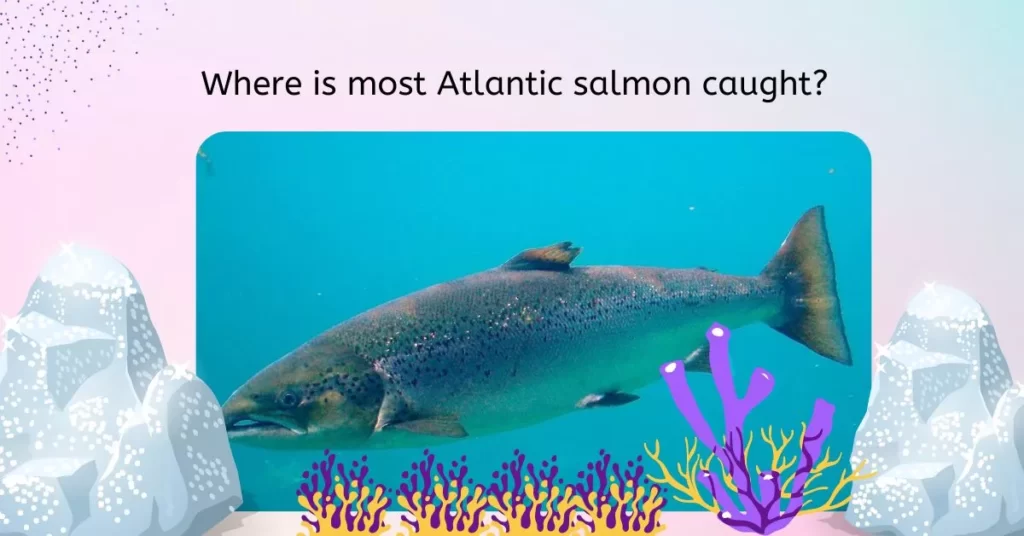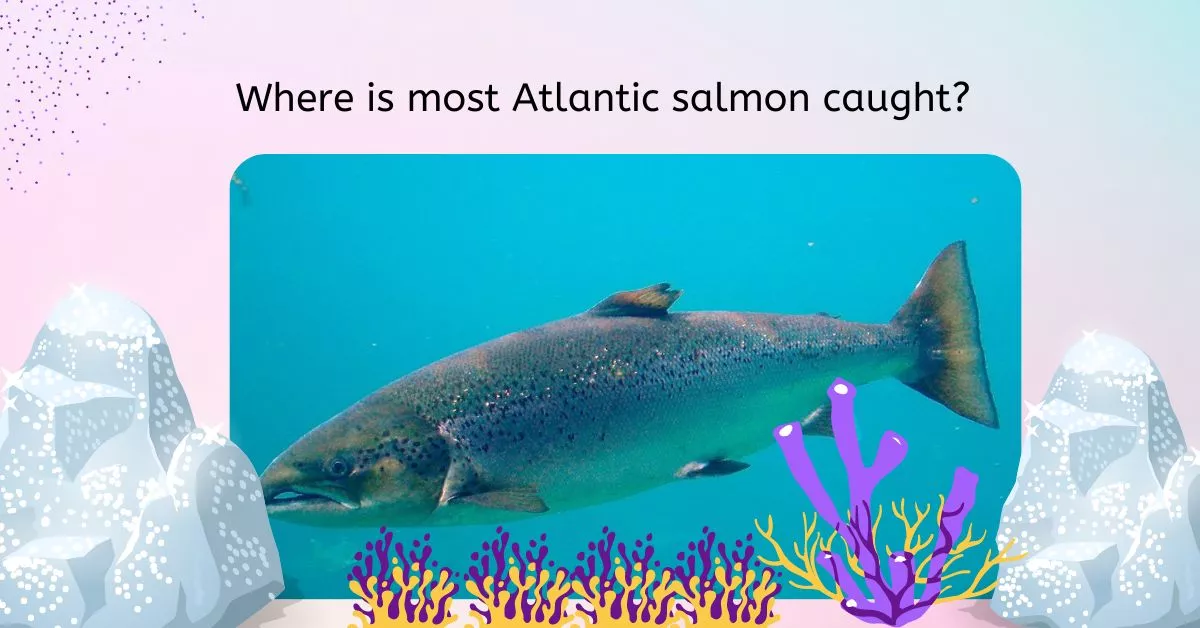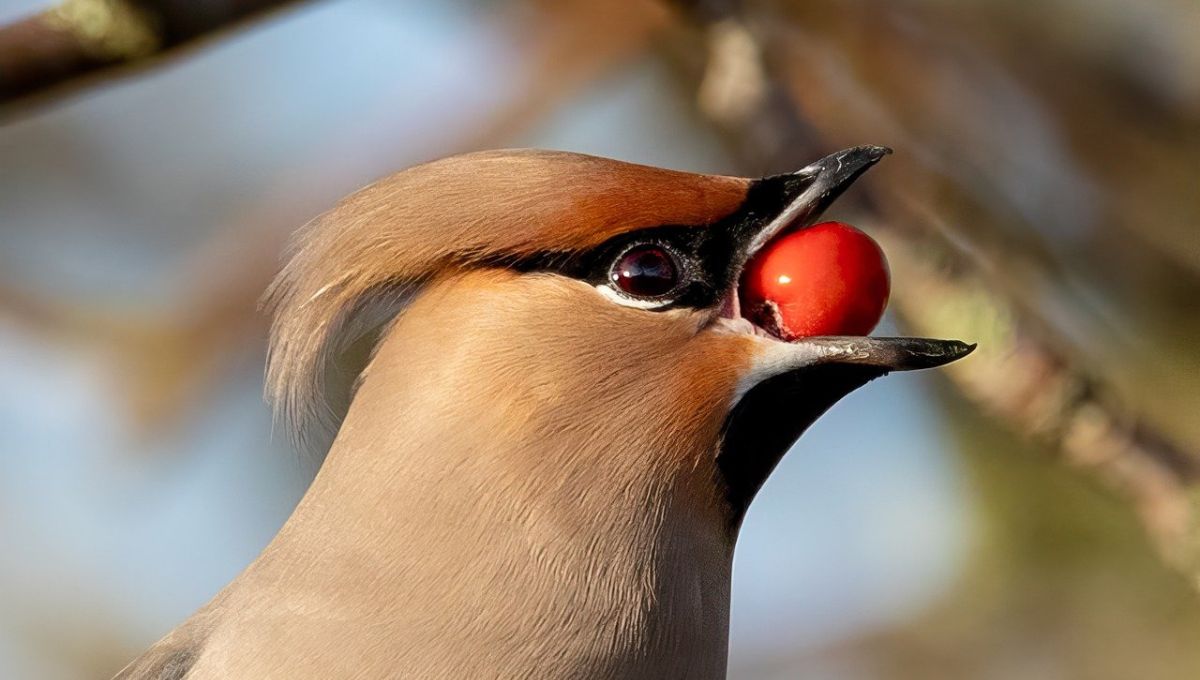Atlantic salmon is an iconic species of the North Atlantic Ocean and has historically supported large-scale fisheries throughout its range.
There are three main sources of Atlantic salmon populations – North American, European and Baltic.
Like all salmon, this species is noted for long migrations and significant physiological changes during the transition from freshwater rivers to coastal seas and freshwater rivers.
Where they live:

Atlantic Salmon has three groups. These three groups are mostly found in North America, Greenland, Iceland, Europe and Russia.
Atlantic salmon spawn in coastal rivers of northeastern North America, Iceland, Europe, and northwestern Russia.
After spawning, they migrate through different parts of the North Atlantic Ocean.
European and North American populations of Atlantic salmon mix while living in the ocean, where they share summer feeding grounds off Greenland.
The North American group historically ranged from northern Quebec to Newfoundland and Long Island Sound.
This group includes the Canadian population and the US population.
In Canada, healthy populations still exist throughout the historic range but many populations have declined severely.
Adult Atlantic salmon live in coastal waters and feed on pelagic invertebrates and some fish.
During the marine portion of their life cycle, these fish are primarily concerned with growing and storing the energy they will need for successful reproduction.
This period usually lasts for 2-3 years. Once they reach breeding size, they begin the long migration to their preferred spawning grounds, fair inland, freshwater rivers. Interestingly, even though the three populations mix in the ocean, they divide into their own groups for reproduction. Read our fresh post about flying fish facts.
In fact, each individual Atlantic salmon returns to the river where it spawned, so rivers around the North Atlantic are home to distinct subpopulations of these salmon.
Thousands of individuals migrate at the same time and reach the spawning grounds.
Once they arrive, females dig nests in light gravel and lay eggs on the riverbed.
Males fertilize the eggs externally and then females bury the nests.
Unlike Pacific salmon (such as Chinook salmon), Atlantic salmon do not die after spawning only once.
They may repeat this cycle several times.
After hatching, baby Atlantic salmon live in various river habitats for about 2-3 years as they slowly make their way to the ocean, where they stay until they reach maturity and start the cycle again.
Although this life cycle is typical of species, it is not necessary for survival. Some subpopulations are landlocked and replace the oceanic portion of their life cycle with large, inland lakes.
Atlantic salmon are important ocean prey for many species.
This salmon has also historically been an important fishery species, and Atlantic salmon fisheries have been managed in Europe for at least 800 years.
At sea, large boats have historically targeted this species in very large numbers.
As they migrate toward their home range, Atlantic salmon are targeted using traps and other semi-permanent structures placed in the river.
Unfortunately, overfishing, climate change, and competition from non-native species all threaten Atlantic salmon, and several subpopulations are critically endangered (extremely vulnerable to extinction) or even extinct.
As individuals return to the rivers where they spawned, climate change is one of the most significant future threats to this species.
As the rivers in the southern part of their range become too warm for the eggs to survive, subpopulations spawning in these rivers will almost certainly become extinct.
Atlantic salmon is one of the most aquatic marine fish and is farmed in many parts of the world, including outside their native range.
Now, essentially all Atlantic salmon sold to the seafood industry is from farms rather than wild populations.
Aquaculture of this scale presents its own problems, and escaped fish can threaten natural populations in the North Atlantic or lead to the establishment of invasive populations. Know more about Angelfish.
Behavior and Diet:
Atlantic salmon are migratory. They travel long distances from river mouths to the Atlantic Ocean before returning to their natal rivers.
For example, US salmon leave the Maine River in the spring and reach the waters off Newfoundland and Labrador, Canada, by mid-summer.
They spend their first winter in the sea south of Greenland and their second growing season in the sea off the coast of West Greenland and sometimes East Greenland.
Mature fish return to their native rivers in Maine to spawn after 1 to 3 years.
Capelin is the preferred food of adult salmon.
Capelin (looks like a rainbow smelt) is a long silver bait fish that ranges from 8 to 10 inches in length. Know more about barb fish species.
Fun Facts About Atlantic Salmon:
1. Atlantic salmon are anadromous, meaning they spend the first 2 to 3 years of their lives in freshwater before moving to the ocean.
2. Before migrating to the ocean, Atlantic salmon undergo a chemical change to balance salt levels in their bodies.
3. Most Atlantic salmon species return to the same river to lay eggs.
4. Almost all Atlantic salmon sold in the US is farm-raised, as the capture and sale of wild Atlantic salmon is prohibited under US regulations.
5. Atlantic salmon is the indicator species; The health of salmon populations closely reflects the condition of their larger marine ecosystem.
SOURCES: WIKIPEDIA, FISHERIES NOA






